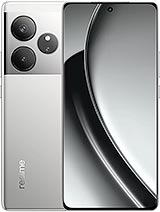Samsung Galaxy F14 4G alternatives
Tap above to see alternatives.
vivo T4 Ultra alternatives
Tap above to see alternatives.
Samsung Galaxy F14 4G

Samsung Galaxy F14 4G
-
Snapdragon 680
6 nm
-
5000 mAh
25W
-
6.7"
1080x2400 pixels
-
50 MP
1080p@30fps
- Specs
vivo T4 Ultra

vivo T4 Ultra
-
Dimensity 9300+
4 nm
-
5500 mAh
90W
-
6.67"
1260 x 2800 pixels
-
50 MP
4K@30fps
- Specs
2.4 GHz, Quad core, Kryo 265
1.9 GHz, Quad core, Kryo 265
1x3.4 GHz Cortex-X4
3x2.85 GHz Cortex-X4
4x2.0 GHz Cortex-A720
12GB 256GB (UFS 3.1)
12GB 512GB (UFS 3.1)
f/1.8, (wide)
2 MP
f/2.4, (depth)
2 MP
f/2.4, (macro)
Sony IMX921, f/1.9, 23mm (wide), 1/1.56", PDAF, OIS
50 MP
Sony IMX882, f/2.6, 85mm (periscope telephoto), 1/1.95", 0.8µm, PDAF (15cm - ∞), OIS, 3x optical zoom
8 MP
GalaxyCore GC08A8, f/2.2, (ultrawide)
1080p
f/2.0, (wide)
GalaxyCore GC32E1, f/2.45, (wide)
SIM1: Nano, SIM2: Nano
SIM1: Nano, SIM2: Nano
13 5G bands
n1, n3, n5, n7, n8, n26, n28, n38, n40, n41, n66, n77, n78
In this performance comparison, the vivo T4 Ultra with its Mediatek Dimensity 9300+ (4nm) performs better than the Samsung Galaxy F14 4G with the Qualcomm Snapdragon 680 (6nm), thanks to superior chipset efficiency.
vivo T4 Ultra offers 3 years of OS updates, whereas Samsung Galaxy F14 4G provides 2 years. Both phones receive the same 4 years of security updates.
vivo T4 Ultra features a superior AMOLED display, while Samsung Galaxy F14 4G comes with an LCD panel. In terms of smoothness, vivo T4 Ultra offers a higher 120 Hz refresh rate, ensuring fluid scrolling and animations. Both devices deliver the same brightness level at nits. Notably, vivo T4 Ultra offers a higher screen resolution, resulting in sharper visuals and more detailed content.
vivo T4 Ultra features a larger 5500 mAh battery, potentially delivering better battery life. vivo T4 Ultra also supports faster wired charging at 90W, compared to 25W on Samsung Galaxy F14 4G.
vivo T4 Ultra includes an IP64 rating, while Samsung Galaxy F14 4G lacks an official IP rating.
¹ Scores can vary even with the same chipset due to RAM, thermals, and software optimization.










